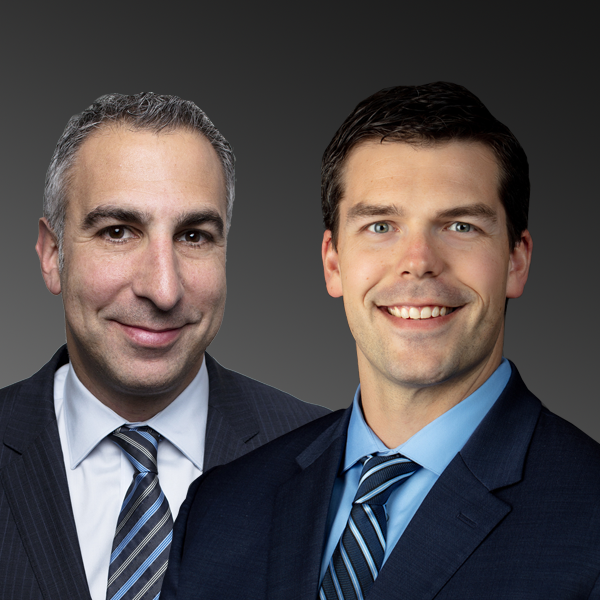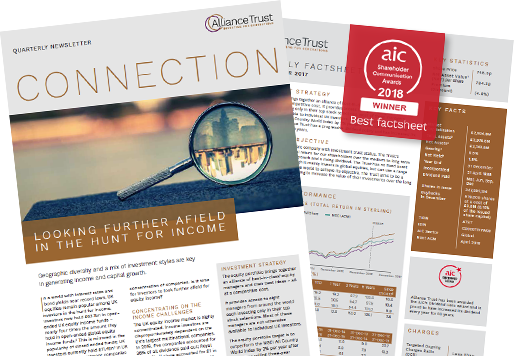“The climate emergency comes down to a single number: the concentration of carbon in our atmosphere.”
Sir David Attenborough addressing the COP26 UN climate change conference in Glasgow, 1 November 2021
Whether last year’s COP26 climate change conference represented a vital step towards a global effort to cool our overheating world, or instead was a missed opportunity to avert a climate catastrophe, depends on your point of view. But the announcement by the Glasgow Financial Alliance for net zero that $130 trillion of assets under management are now committed to net zero, amply demonstrated the movement of capital that is under way.
Ultimately, only concrete actions, not conference rhetoric, can solve the colossal climate challenge. As Sir David Attenborough’s above quote from his stirring address to the COP26 conference implies, the most important thing we can all do to limit global warming, is reduce the amount of carbon dioxide and other greenhouse gases, such as methane and nitrous oxide, we pump into the atmosphere.
Failure to slash these emissions will jeopardise humanity’s efforts to cap the rise in global temperatures this century at 1.5 ̊C Celsius above pre-industrial levels.
Keeping the planet’s warming below this temperature threshold was a key plank of the 2015 Paris Agreement on combating climate change. It remains unclear whether this goal will be achieved, but breaching it could have devastating consequences.
Our Net Zero pledge
We all need to act. But how are we going to play our part in meeting the climate challenge?
Last year the Company and our investment manager, Willis Towers Watson (WTW), committed to a target of net zero greenhouse gas emissions from the portfolio by 2050, and, on the way, halving them by 2030. What does that mean? We pledge that, by the middle of the century, the amount of greenhouse gases across our portfolio must overall net off to zero, taking into account the emissions arising from the day-to-day operations of each of the roughly 200 companies held in the portfolio.
This aim aligns with the goals of the Paris Agreement. It also meets the principles of two major climate initiatives established by the investment management industry: the Institutional Investors Group on Climate Change (IIGCC) Net Zero Investment Framework (NZIF) and the Net Zero Asset Managers Initiative (NZAMI), which WTW signed up to in 2021.
Why should shareholders care about climate change?
Climate change is first and foremost a physical risk, but it is a financial risk, too. It is far-reaching and foreseeable. For investors, there are significant and growing risks from climate change, but also opportunities as the world moves to a net zero future. Greater focus and momentum among policymakers and regulators will alter the global economy and financial markets. Climate transition risks will affect the fortunes of companies and investment portfolios.
We have committed to a net zero greenhouse gas emission portfolio because we have a responsibility to wider society, but also because we believe starting this journey now will improve the portfolio’s long-term returns relative to the calculated risks we take in managing the portfolio.
Hitting our targets won’t be straightforward. The challenge of plotting the net zero journey, along with its measurement and monitoring, is a developing science; the relevant data points and how we analyse them are rapidly evolving. But we are well placed. WTW has invested heavily to help its clients with the shift to net zero, and we will be drawing extensively upon its expertise and access to over 70 climate specialists to help us reach our net-zero-by-2050 goal and interim 2030 target. WTW has developed its own Carbon Journey Plan methodology, which we will follow. This includes a rigorous framework with which to measure and evaluate our progress, along with controls to help keep us on track.
Our current carbon footprint
Setting the carbon journey plan, along with measurement and monitoring of the transition, is a developing science. While there is no single definitive metric that can be used to adequately measure progress at this time, the data and analytics in the climate space are rapidly evolving. In terms of carbon emissions, these are higher than those of the benchmark as at 31 December 2021, given some of our Stock Pickers increased their allocation to energy stocks earlier in the year, which was beneficial to returns, given the strong momentum in the sector. it is not in the Company’s shareholders’ financial interests to always be ahead of the pathway to net zero, regardless of market pricing or the magnitude of the risk posed by climate change. Our exposure will depend on opportunities that arise at any given point in time. In terms of the WACI, which is a measure of a portfolio’s exposure to carbon-related potential market and regulatory risks, we are less exposed than the benchmark.
Critically, we note that in terms of both measures, the stocks in our portfolio are reducing their carbon emissions, and improving their carbon efficiency at a faster rate than the stocks in the benchmark.
Many of these higher emitting companies are on a decarbonisation path that is consistent with the Paris Agreement, something that we and our Stock Pickers monitor. And often they are investing heavily in “green” energy and will be a key part of the solution.

Approach: Look forward and avoid and oversimplification
We will avoid an overly simplistic approach to decarbonisation, as this can often be self-defeating. We don’t want to unduly punish industries or countries that face the biggest hurdles in moving to a low-carbon world. Starving them of funding at a time when they most need it, may be more harmful to a successful shift to a low-carbon economy. Many climate solutions are being developed by companies that are currently highly carbon-intensive, but provide a path for the whole economy to decarbonise quicker.
This means forward-looking measures are needed when analysing how companies can move to net zero emissions, not just backward-looking carbon emissions numbers. WTW has therefore developed its own forward-looking measure of climate transition risk, which it calls Climate Transition Value at Risk (CTVaR). This measure will help us identify, company by company, the winners and losers in the move to a low-carbon world.
We believe our ability to combine standard carbon metrics with a comprehensive set of additional data and analysis, including CTVaR, allows us to understand climate-related risks better, and gives us an edge versus other investment trusts.
Our investment toolbox
So what actions can we take within the portfolio to get to net zero? There are several tools in our investment toolbox to help us progress towards our net zero destination.
Avoiding investing in certain industries and companies entirely (exclusions), or selling out of existing investments (divestment) in companies whose activities harm the climate, are options. But while these may be quick fixes for the Company’s portfolio, they do not bring us closer to a more resilient economy, or benefit wider society. That said, exclusion or divestment can be the right approach in certain instances, and we use it to a limited extent, mainly in situations where exposure to climate risk cannot be resolved via other means, such as having constructive dialogue with companies (known as engagement).
One case for exclusion from the Company’s portfolio are firms that make a significant amount of their money from activities that are likely to be phased out in the net zero world. Dialogue with these firms is unlikely to be productive.
Thermal coal and tar sands, a type of petrol deposit, are major sources of greenhouse gas emissions and are highly pollutive and environmentally damaging. We have decided to exclude from the portfolio companies that generate significant revenues from thermal coal and tar sands.
Exclusion might be appropriate for other industries, too, over time. Our sense of what business activities we simply cannot engage with, and must exclude, will evolve.
We think engagement – working in tandem with companies and having candid but productive discussions with them on all different types of issues, including their climate impact – is often likely to be more effective in decarbonising the global economy than exclusions.
An active engagement approach, supported by specialists
Extensive engagement already happens across the Company’s portfolio. WTW monitors how well climate-related issues and wider sustainability concerns are baked into the investment activities of our ten underlying Stock Pickers. Our investment manager assesses how well our Stock Pickers reflect climate risk in their decisions when picking stocks, using their own climate risk metrics, such as the CTVaR, to challenge the Stock Pickers when appropriate.
WTW also regularly engages with our Stock Pickers and the wider investment management industry on sustainability and stewardship practices. In 2020 alone, WTW carried out over 200 engagements with over 70 investment management firms on sustainability, sharing with them its views of what it believes to be best-in-class practices. WTW also participates in broader discussions on many responsible investment issues, including climate risk, with industry bodies, governments, regulators and policy-makers.
Together with WTW, we are able to go even further than this, by appointing EOS at Federated Hermes (EOS), a leading stewardship specialist, to engage with companies, regulators and governments. Our Stock Pickers and EOS regularly speak to companies to encourage them to follow best practices for the climate, move towards a Paris-aligned pathway and to share as much information as possible on their climate strategies and carbon footprint. This includes collaborative initiatives, such as EOS leading on a number of Climate Action 100+ engagement projects; Climate Action 100+ being an investor-led initiative to ensure the world’s largest corporate greenhouse gas emitters take necessary action on climate change.
The journey begins
We have taken major steps in drawing up our plan to reach net zero by 2050, and meet our interim target of a 50% cut in the portfolio’s greenhouse gas emissions by 2030. Underpinned by the pioneering work and industry-leading resources of WTW, we have a framework to monitor our progress and controls to help keep us on track.
Achieving these ambitious targets will require a multi-decade commitment, but we firmly believe it is in the interests of our shareholders and wider society to make this journey. We look forward to updating you on our progress along the way.
Past performance is not a reliable indicator of future returns. This material contains the opinions of the manager and such opinions are subject to change without notice. Forecasts, estimates and certain information contained herein should not be considered as investment advice or a recommendation of any particular security, strategy or investment product. Information contained herein has been obtained from sources believed to be reliable, but not guaranteed. TWIM is the appointed Alternative Investment Fund Manager of Alliance Trust plc. Alliance Trust plc is a listed UK investment trust and is not authorised and regulated by the Financial Conduct Authority.
Read more investment expertise






